
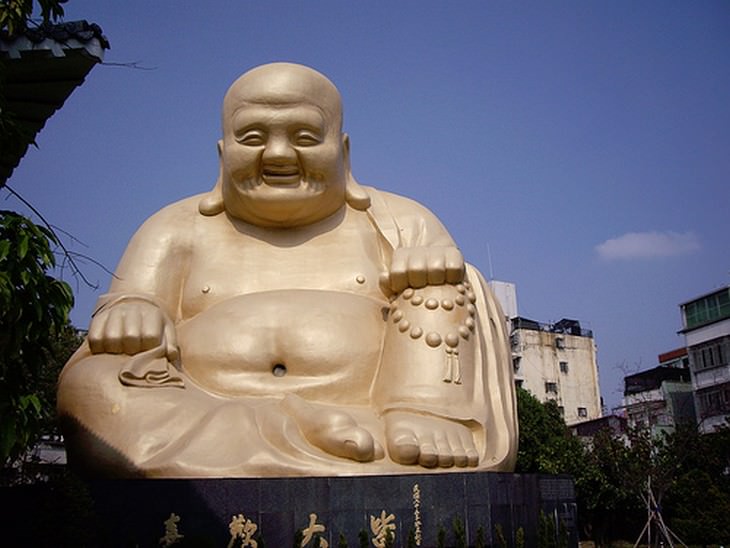
The image that comes to mind upon hearing the name ‘Buddha’ for many westerners is probably that of a chubby smiling guy, as he is portrayed in countless statues in gardens, restaurants, or antique stores. The real Buddha, however, looked nothing like that. He was born with the name Siddhartha Gautama, as a prince in present-day Nepal. He decided to give up his lavish lifestyle to endure poverty and when this didn’t fulfill him, he sought a ‘Middle Way’, which means a life without social indulgences but also without deprivation.
Siddhartha Gautama was, in fact, thin. The famous image of the Laughing Buddha is not actually of him; these emerged in 10th-century Chinese folktales, centering around a monk named Ch'i-t'zu, or Qieci, from Fenghua, in what is now the province of Zhejiang.
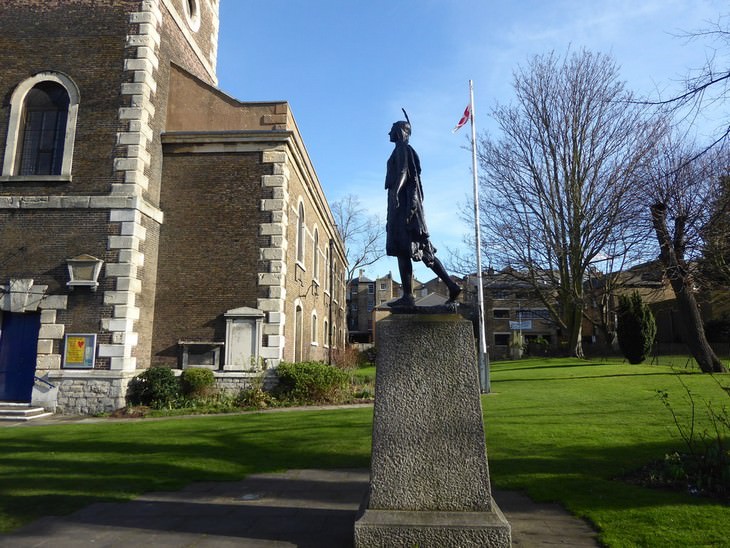
Thanks to the Disney film, Pocahontas is one of the most inaccurately represented figures in history. She was born 1596 under the name Amonute and went by the more private name Matoaka. Pocahontas was supposedly a nickname she earned, which depending on who you ask may mean “playful one” or “ill-behaved child”. She was the daughter of Powhatan, the ruler of more than 30 Algonquian-speaking tribes in and around the area that the early English settlers would claim as Jamestown, Virginia.
According to Captain John Smith’s written memories, Pocahontas saved him from execution when he was captured just a few weeks after the colonists’ arrival to the area. Modern scholars believe she was probably playing a scripted role in some kind of adoption ceremony. When tensions rose between the two peoples, Pocahontas was kidnaped and imprisoned by the Europeans. During her time as a prisoner, she converted to Christianity. According to official documents, the conversion was voluntary, and her baptismal name was Rebecca. Contrary to popular belief, she married a tobacco farmer named John Rolfe, and not John Smith. Pocahontas died of an illness in 1617, after a visit to England. In recent years, more work is being done to uncover the true facts of her story, and her efforts to help her people.
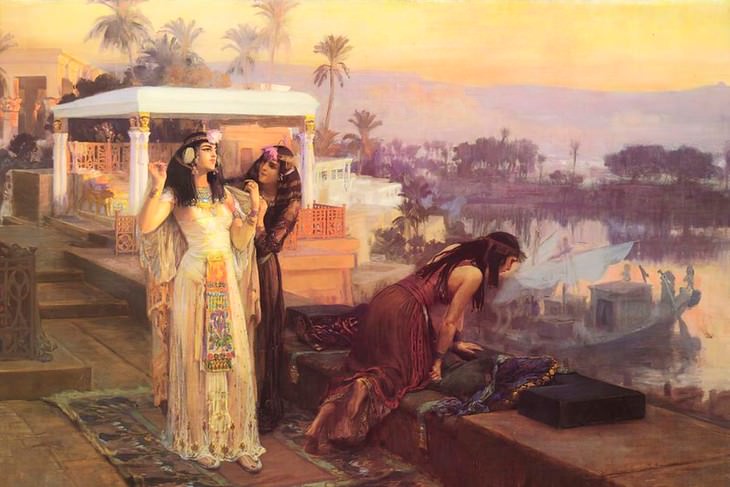
Cleopatra on the Terraces of Philae by Frederick Arthur Image Source: Mary Harrsch / Flickr
Much of what is considered common knowledge of Cleopatra comes from ancient roman propaganda and Shakespeare’s play Antony and Cleopatra. The Romans presented her as a ruthless seductress who manipulated powerful Roman generals Julius Caesar and Mark Antony because she needed them to kill her siblings in order to solidify her reign over Egypt. Shakespeare, too, portrayed her life superficially and significantly romanticized her relationship with Mark Antony.
In reality, Cleopatra became the de facto ruler of the Egyptian empire at only 18 years of age. Egyptian law dictated that female rulers had to marry a co-regent in order to rule, which forced Cleopatra to ceremoniously marry her 12-year-old brother. But in fact, she was the dominant one in the couple and the one who ran the Kingdom.
She was versed in mathematics and philosophy, was a gifted diplomat, and was the first Pharoah to speak the Egyptian language of the common people. Cleopatra also brought Egypt out of an economic depression that was caused by bad decisions of her predecessors, and amassed great wealth, not for herself but for the entire Egyptian empire. Though she did have a relationship with Julius Caesar and Mark Anthony, those relationships were founded on being mutually beneficial.
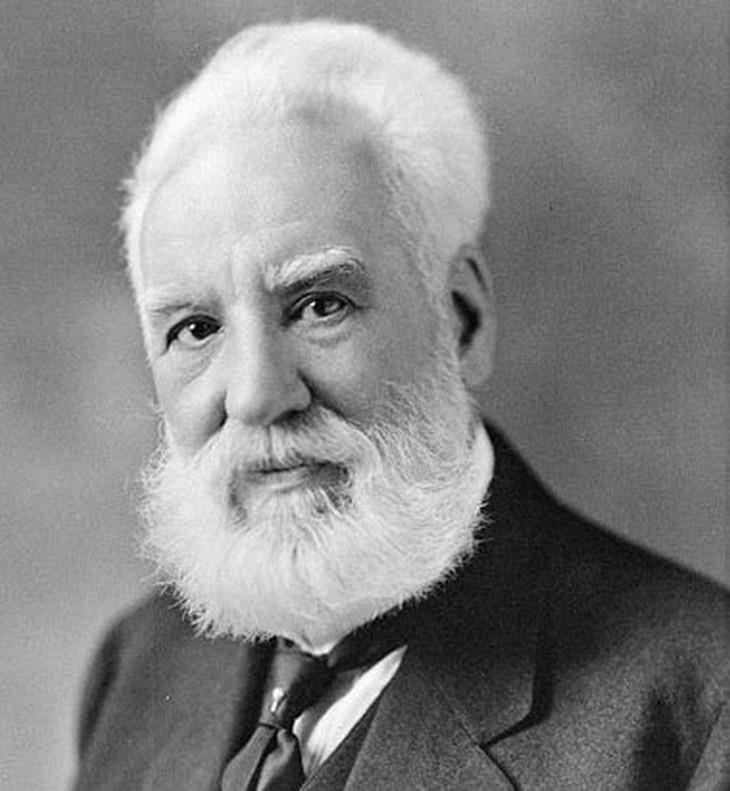
For decades, Alexander Graham Bell has been celebrated for inventing the telephone, but in 2002 the US Congress recognized Antonio Meucci, an impoverished Italian immigrant, as the true inventor of the telephone. According to the story, Meucci managed to make a prototype of a functioning telephone five years before Bell, but could not afford the $250 needed for a definitive patent for his "talking telegraph", so in 1871 he filed a one-year renewable notice of an impending patent. Three years later, he could not even afford the $10 to renew it.
When he asked Western Union for the model and technical detail to be returned to him in 1874, he was told they were lost. Two years later, Bell, who shared a laboratory with Meucci, filed a patent for a telephone and became a celebrity. Sadly, it seems like he did not deserve the fame and commemoration he received.
Related: 10 Historical Figures Side by Side Their Live Descendants
Che Guevara’s image is viewed either as an inspirational icon of revolution or as a generalized symbol of the underdog and to some as a de-politicized fashionable logo. The facial caricature based on the famed photographs Guirrellerro Heroico has been printed on nearly any item you can imagine, from t-shirts to bandanas. When an image becomes so widespread, naturally many people are exposed to it without actually knowing the true story of the character it depicts, or only knowing a generalized version of it.
The truth about Che Guevara is that he is a polarizing figure. While he was charismatic and passionate, he was also a ruthless executioner, who oversaw the executions of hundreds of men in Cuba during the early days of Fidel Castro’s government. Despite the competing narratives, Che Guevara has become a symbol of counter-culture that sometimes operates independently of the man himself.
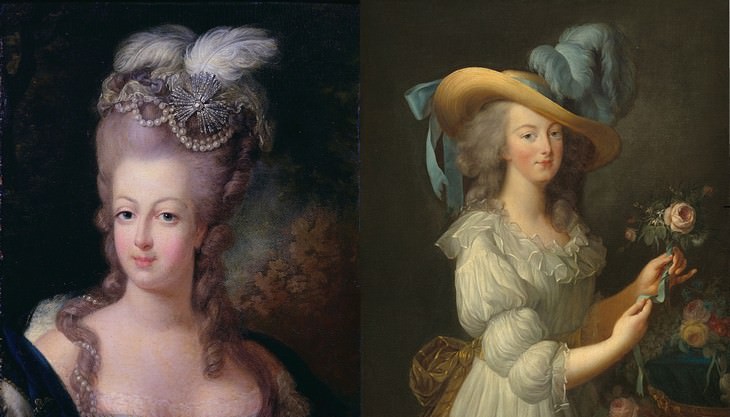
Marie Antoinette famously became a symbol of the decadence of the French elite. By the time she was executed, she had been disparaged as a frivolous, selfish, and immoral woman whose lavish lifestyle had increased economic inequality. And this is how she is largely remembered in popular culture, however, not all criticisms attributed to her are true.
Firstly, the famous words “Let them eat cake” were never said by Marie Antoinette. It was a phrase French people had been attributing to foreign queens for decades. Also, despite her reputation as frivolous, and committed to luxurious excess, she actually liked to dress down. Together with her seamstress, Marie Antoinette designed the Little White Dress (pictured on the left), which shocked people for how casual it was. Ironically, the Little White Dress became a favorite model of French Revolutionary women, for its simplicity.
The bottom line is that while Marie Antoinette was no saint (she did believe that the French Bourbon monarchy had been ordained by God, therefore she couldn’t be equal to her subjects), but it wasn’t her spending that caused France’s economic problems. The culture of excess in Versailles is something she stepped into, not something she created, and contrary to popular belief she did not take it to the extremes other royals did.
Share this article with someone who loves history!